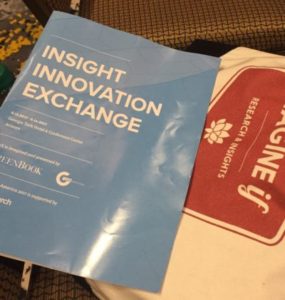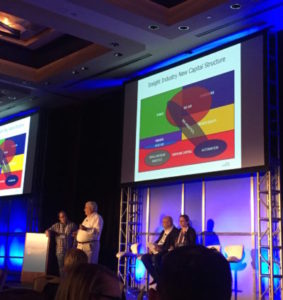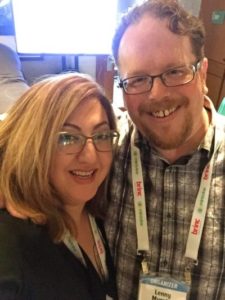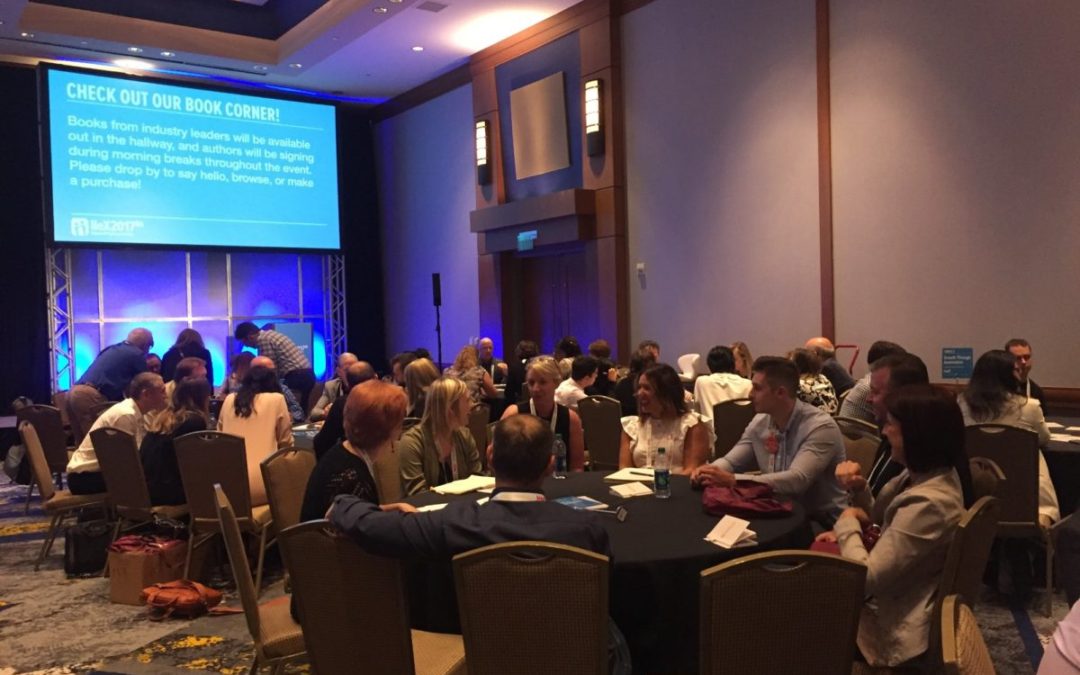Were you able to make it out to Atlanta for IIeX2017? If you did, I’m sorry I didn’t have a chance to catch up with you. Like you, I was busy listening, absorbing, and processing everything that was happening all day and night throughout  the entire conference. Here, I want to share some general observations, things that ‘hit’ me or “hit home” with me. Will you share yours too?
the entire conference. Here, I want to share some general observations, things that ‘hit’ me or “hit home” with me. Will you share yours too?
1
The growth of this conference over the years is incredible and highly encouraging because you see companies embracing innovative technologies more and more. This gradual change elevates not just those companies that attend the conference but the entire industry as a whole. And this is one of the most important reasons why I support this conference.
2
Together with the growth, apparently come the suits. I remember in 2013 when I attended IIeX NA for the first time, a visual scan of the 300+ attendees would reveal a more relaxed, business- or casual choice of apparel. I sometimes refer to this as “Silicon Valley or start-up chic.”
This time, it hit me that there were many, many more people in formal business suits (mostly men). The sales people have descended on the conference, was the conclusion.
And this is a good thing – because it shows that the industry believes in the opportunity in innovation – as long as a genuine spirit of that new, fresh, and somewhat non-conformist thinking does not get lost among the suits. On the last day, I hesitated but put on my ripped jeans. Good thing, most of the suits had already left.
3
This year I could also tell that attendees from the corporate side may have been “hiding” – overtly. While this happens in most conferences, it baffles me to see junior or mid-level corporate researchers conceal their name cards, or avoid eye contact, or just lay low altogether. As a former client, I do appreciate the deluge of sales pitches, offers to connect, or business card requests…
In one of the speaker sessions, I was standing next to a young man, by the door, whose sole job was to hand out business cards as people were exiting. He said, “Can I force my card on you?” As an ethnographic researcher, I marveled at how few people said no. But I digress.
For client-side attendees, aren’t there more effective ways to address the sales deluge than to hide? We are here because this is an innovation-focused conference. Innovation will only come into an organization if there are champions – like you – open and willing to embrace innovation, despite the work and effort it may entail.
4
 Despite the sheer amount of new, directly or indirectly MR-related tech, platforms, apps, etc. there is still a dominating question in the air about what does this all mean? I love sticking around for the last day of the conference where people like Lenny Murphy, Simon Chadwick, etc. tackle the biggest themes – after the “shiny object” overload. And like in the past, this time too, some major issues were raised – including the importance of actionability – with which I couldn’t agree more. Yes, as a client or a provider, you now have a few more ways to get to the answers. Faster, cheaper, automated, AI-driven, etc. And this should be absolutely celebrated!
Despite the sheer amount of new, directly or indirectly MR-related tech, platforms, apps, etc. there is still a dominating question in the air about what does this all mean? I love sticking around for the last day of the conference where people like Lenny Murphy, Simon Chadwick, etc. tackle the biggest themes – after the “shiny object” overload. And like in the past, this time too, some major issues were raised – including the importance of actionability – with which I couldn’t agree more. Yes, as a client or a provider, you now have a few more ways to get to the answers. Faster, cheaper, automated, AI-driven, etc. And this should be absolutely celebrated!
But what are you going to do once you have the answers? I call this the last “hundred feet” of research design, harkening back to my sales and retail marketing colleagues from a former life.
What problems are these technologies solving and how are you going to ensure these new tools indeed drive real behavior change in your organization or client?
I wish there is more discussion of this topic after the conference, as we all go back to our offices, and at the conference next year. Actionability, the ability of a data-based project or initiative to drive change in a large, complex and often unwieldy organization – is the holy grail (methinks) for all of us in the industry, no matter which side you’re on, or what new shiny tool you might be exploring.
5
 Can I confess something to you? I suffered from FOMO at the conference. There was so much great content across the four tracks, exhibitors to explore, and people to talk to, that I seriously struggled in deciding what to cover and what to skip. All this on top of the many great friends, former colleagues, familiar faces and new people that I wanted to meet.
Can I confess something to you? I suffered from FOMO at the conference. There was so much great content across the four tracks, exhibitors to explore, and people to talk to, that I seriously struggled in deciding what to cover and what to skip. All this on top of the many great friends, former colleagues, familiar faces and new people that I wanted to meet.
Still one of the key things that I loved seeing was the robust discussion around the importance of story. Despite all the new methods, tech, trends, etc., seeing more and more people focused on the (re-emerging) importance of great storytelling with research and data is reassuring. Heck, even McKinsey talked about story! The reversal of the “80-20 split” from “time spent on gathering/analyzing data” to “crafting/telling a story” is perhaps the biggest message that we all should embrace.
Whether it’s an AI-driven emotion reading platform, a dashboard specifically designed for the perennial CMO, or tech that embeds the presenter inside the deck she is presenting, the power of a good story transcends it all. Good stories come from good design. One reminder I brought home to my team was always to ask “What is the story?”


Recent Comments